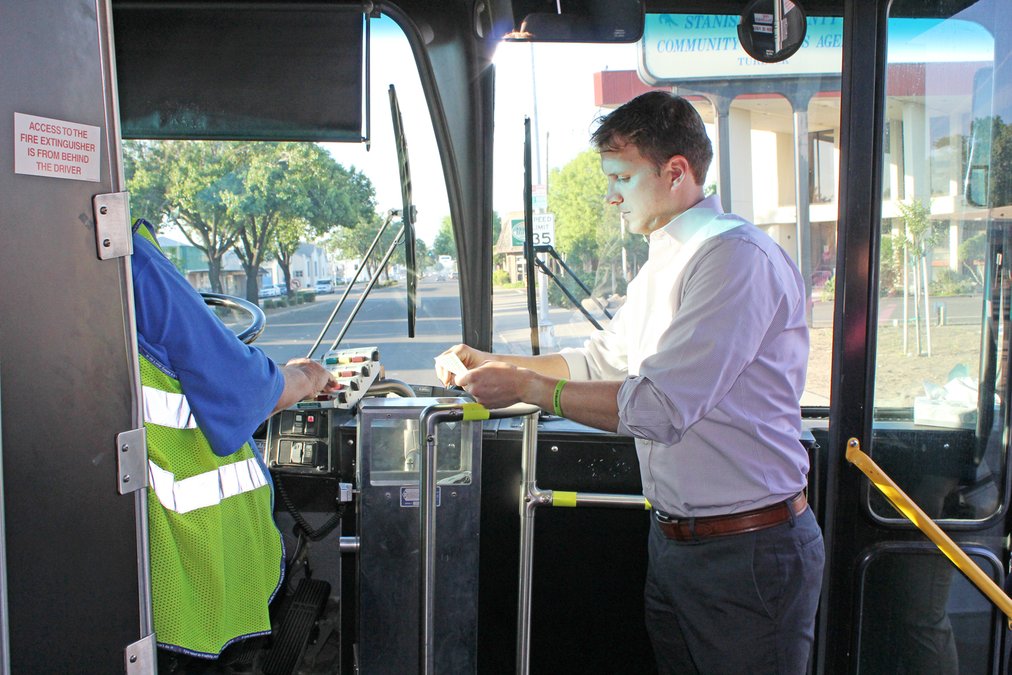The Turlock City Council unanimously approved two resolutions regarding transit at last week’s city council meeting that aims to use technology to streamline bus service.
The transit department is looking to maintain their relationship with Swiftly for another three years for an amount that won’t exceed $95,814, and seek a competitive solicitation in the next three to four months for a full tech overall on the fixed route buses. The investments would be funded through transit grant funds.
“Prior to the adoption of Swiftly three years ago we had no GPS trackers on the buses, no way for passengers to get real time information about their trips, no way for operations staff to see the status of buses real time and no way for admin staff to look at on-time performance,” said transit manager Wayne York. “Since that time passengers have come to rely on this data.”
Swiftly is a technology platform that offers tools to businesses and localities to make their services more digitally friendly. According to York, when the city first partnered with Swiftly three years ago, it was supposed to be more of an “interim solution” that would give the city more time to explore “more competitive and robust long-term solutions.”
One of the enhancements the transit department is looking for is a wireless gateway that would allow the city to connect to their onboard technology and have Wi-Fi, as well as automatic passenger counters which would count passengers getting on and off the bus.
“Not only does that streamline and simplified our reporting to the federal government about ridership data, it gives us stop level analytics,” said York. “We now know when people are getting on and off the bus at a stop level. On a planning level that’s very helpful for us when we’re planning our routes.”
The proposed improvement also allows to get data out to the community. Passengers would have the ability to see information on the app such as if the bus is full. The city also proposed having technology on the bus to assist visual or audio deficit passengers. The overall goal of these improvements will be to assist the driver, so “the driver could just focus on driving the bus,” according to York.
Due to staffing and the pandemic, the transit staff wasn’t able to move forward with long-term resolutions when the partnership with Swiftly was adopted three years ago. York said the staff is prepared to move forward with Swiftly to provide these improvements.
The project is expected to last 18 months from solicitation to completion.









